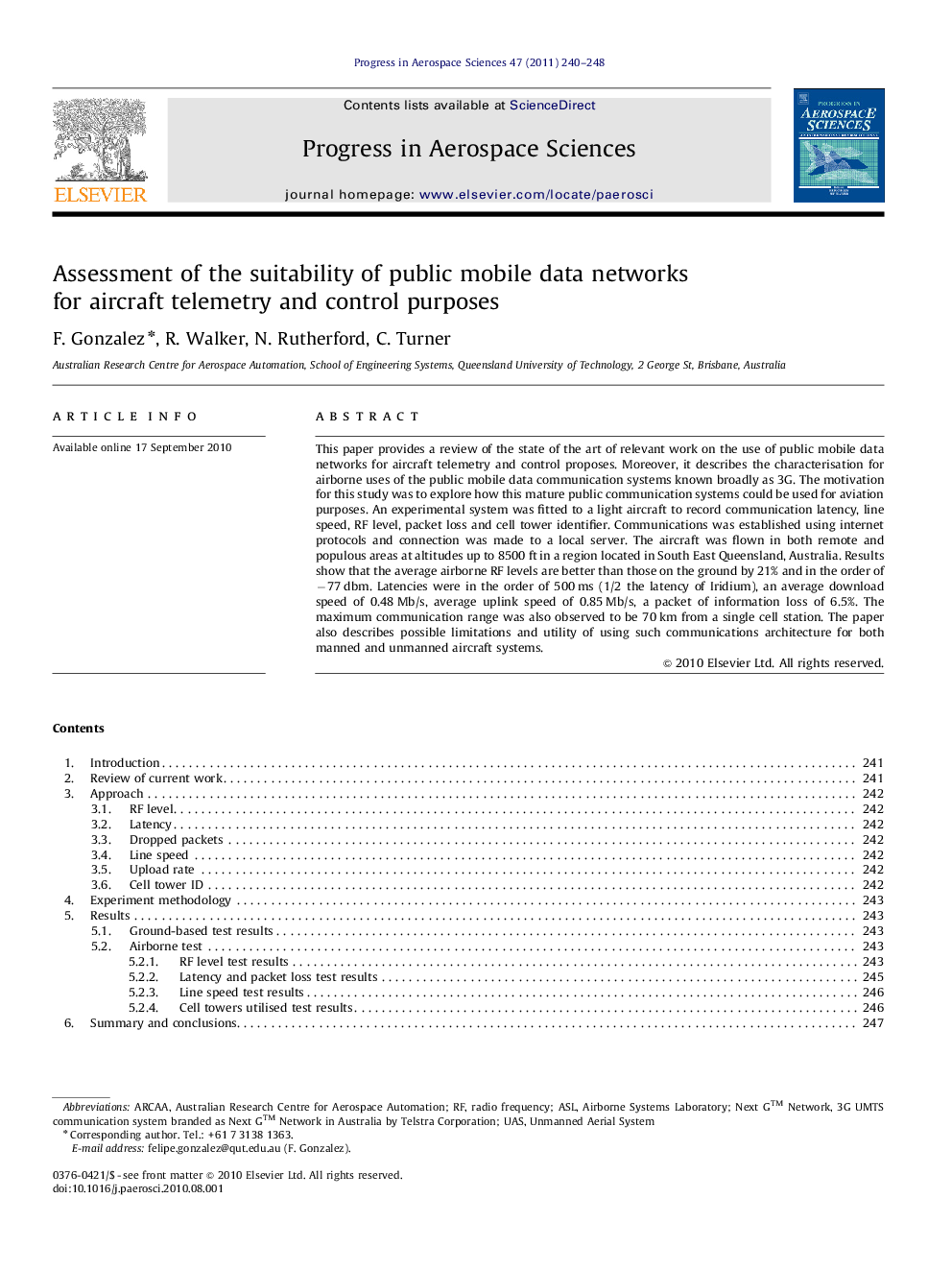| Article ID | Journal | Published Year | Pages | File Type |
|---|---|---|---|---|
| 1719409 | Progress in Aerospace Sciences | 2011 | 9 Pages |
Abstract
This paper provides a review of the state of the art of relevant work on the use of public mobile data networks for aircraft telemetry and control proposes. Moreover, it describes the characterisation for airborne uses of the public mobile data communication systems known broadly as 3G. The motivation for this study was to explore how this mature public communication systems could be used for aviation purposes. An experimental system was fitted to a light aircraft to record communication latency, line speed, RF level, packet loss and cell tower identifier. Communications was established using internet protocols and connection was made to a local server. The aircraft was flown in both remote and populous areas at altitudes up to 8500Â ft in a region located in South East Queensland, Australia. Results show that the average airborne RF levels are better than those on the ground by 21% and in the order of â77Â dbm. Latencies were in the order of 500Â ms (1/2 the latency of Iridium), an average download speed of 0.48Â Mb/s, average uplink speed of 0.85Â Mb/s, a packet of information loss of 6.5%. The maximum communication range was also observed to be 70Â km from a single cell station. The paper also describes possible limitations and utility of using such communications architecture for both manned and unmanned aircraft systems.
Related Topics
Physical Sciences and Engineering
Engineering
Aerospace Engineering
Authors
F. Gonzalez, R. Walker, N. Rutherford, C. Turner,
